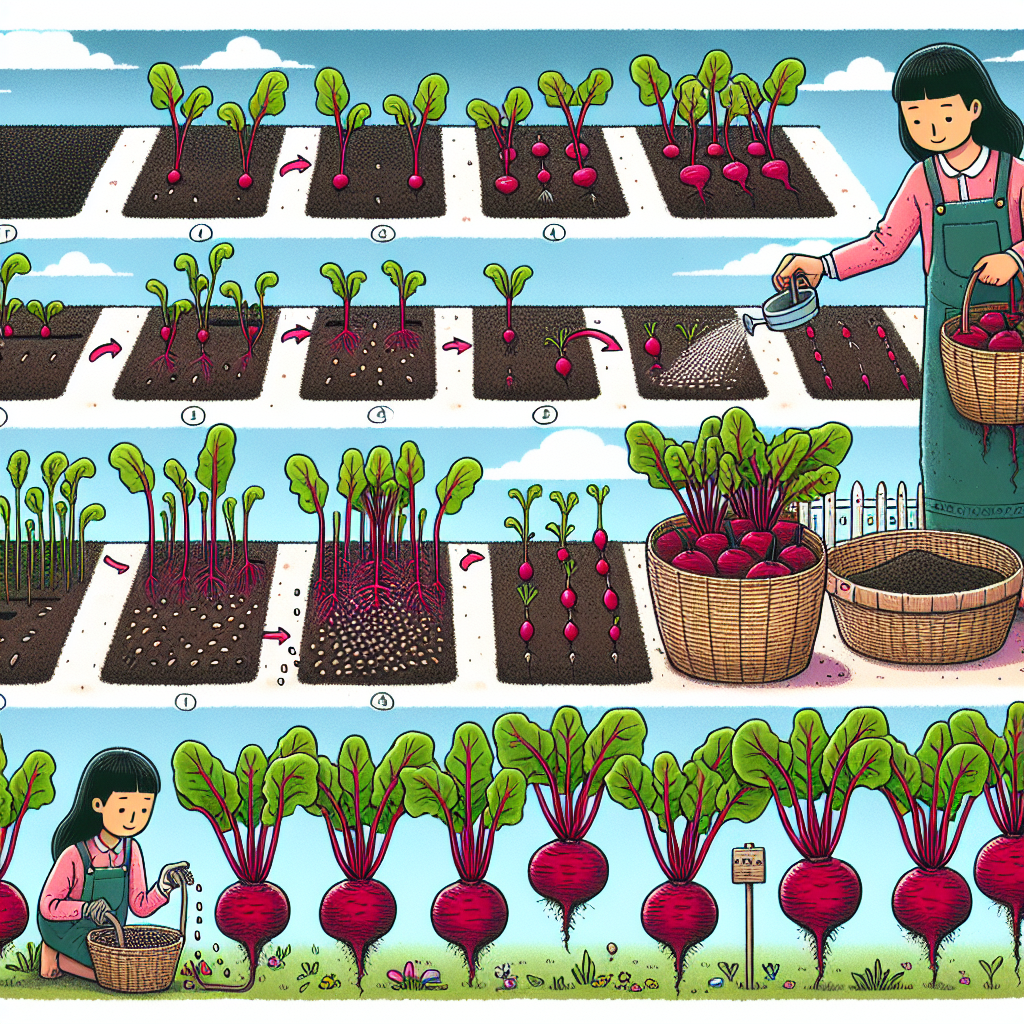
How do you grow beetroot
The Ultimate Guide to Growing Beetroot: Tips and Techniques
Beetroot, also known as beets, is a versatile vegetable cherished for its earthy flavor and vibrant color. Whether you are a seasoned gardener or a novice, knowing how to grow beetroot can bring a wealth of benefits to your garden. In this comprehensive guide, we'll explore the vital steps involved in cultivating these nutritious roots, as well as tips for successful beetroot growth.
Understanding Beetroot: Types and Benefits
Before diving into the how do you grow beetroot process, it's essential to have a basic understanding of this unique plant. Beetroot comes in various types, each offering distinct flavors and characteristics. Below are some popular varieties:
- Chioggia: Known for its striking pink and white rings, this variety is often used for salads.
- Detroit Dark Red: A classic variety with a rich, sweet flavor.
- Golden Beet: Offers a milder, sweeter taste with a beautiful gold color.
- White Beet: Less common but known for its earthy flavor.
Beetroot is also packed with nutrients. It's rich in fiber, antioxidants, and essential vitamins like C and B6. Furthermore, its natural compounds can aid in lowering blood pressure and improving overall cardiovascular health.
Choosing the Right Location
The first crucial step in growing beetroot is selecting an appropriate location in your garden. Beetroots thrive in well-drained soil that is rich in organic matter. Here are some considerations:
- Sunlight: Choose a site that receives full sun, ideally 6-8 hours of direct sunlight daily.
- Soil Quality: Loamy, slightly acidic soil with a pH of 6.0 to 7.0 is best for growing beets.
- Drainage: Ensure the selected area has good drainage to prevent waterlogging.
Preparing Your Soil
Preparation of the soil is vital for successful beetroot growth. Follow these steps to ready your garden bed:
- Clear the Area: Remove any debris, weeds, or old plant material from the garden bed.
- Till the Soil: Use a garden fork or tiller to loosen the soil to a depth of about 12 inches.
- Enrich the Soil: Add organic matter, such as compost or well-rotted manure, to enhance soil fertility.
- Test the pH: Use a pH testing kit to determine the soil's acidity. Adjust if necessary with lime or sulfur.
Planting Beetroot Seeds
Once the soil is prepared, it’s time to plant the seeds. Beetroot seeds can be sown directly into the ground, typically in early spring or late summer, depending on your climate. Here’s how to do it:
- Seed Selection: Choose high-quality seeds from a reputable supplier.
- Spacing: Plant seeds about ½ inch deep and 1-2 inches apart, with rows spaced about 12 inches apart.
- Thinning: Once seedlings emerge, thin them to allow for about 3-4 inches of space between each plant.
Watering and Fertilizing Beetroot
Beetroot requires consistent moisture to develop properly. Follow these guidelines for watering and fertilizing:
- Regular Watering: Water deeply once a week, adjusting for rainfall and temperature.
- Mulching: Apply a layer of mulch around the plants to retain moisture and suppress weeds.
- Fertilization: A balanced fertilizer or one high in potassium should be applied every 4-6 weeks.
Managing Pests and Diseases
Like all garden plants, beetroots can be susceptible to pests and diseases. To protect your crops, consider the following:
- Common Pests: Watch for aphids, leaf miners, and beetroot weevils. Use insecticidal soap or neem oil as needed.
- Disease Management: Avoid overcrowding and practice crop rotation to prevent diseases like Cercospora leaf spot.
- Companion Planting: Planting beets alongside crops like onions and garlic can deter pests.
Harvesting Beetroot
When your beetroots are ready for harvest, the excitement of your gardening efforts culminates! Follow these guidelines to ensure you're harvesting at the right time:
- Timing: Harvest typically occurs 6-8 weeks after planting, depending on the variety.
- Size Check: Harvest when the roots are between 1.5 to 3 inches in diameter for optimal flavor.
- Gentle Uprooting: Use a garden fork to gently lift the beetroots out of the soil, being careful not to damage them.
Storing and Preserving Beetroot
Once harvested, you can store beetroot to enjoy its flavor long after the growing season. Here are steps to properly store and preserve beetroots:
- Curing: Allow freshly harvested beets to cure in a cool, dark place for a few days.
- Cleaning: Remove excess soil and trim the greens, leaving about an inch of the stem.
- Storage: Store them in the refrigerator, ideally in a perforated plastic bag, for several weeks.
Conclusion
Growing beetroot is a rewarding endeavor that provides both delicious culinary options and health benefits. By following the steps outlined in this guide on how do you grow beetroot, you'll be on your way to enjoying successful harvests. Your garden can flourish with nutritional value and color, bringing variety to your meals. Start planting, tend to your beets, and prepare for a fruitful gardening season ahead!
By Guest, Published on October 25th, 2024